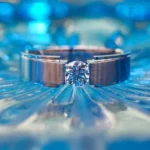Ever notice how different metals look? Brass has a golden-yellow appearance, bronze is reddish-brown, and stainless steel has its own distinct look. The color isn’t just inherent to the metal itself; it’s a result of its composition, how it’s treated, and even its environment. This guide breaks down the secrets of alloy color, explaining what makes each alloy its unique shade and how you can control it. From the basics to advanced techniques, this is a resource for anyone interested in understanding and working with alloy colors.
Alloy Color: A Definitive Guide
Alloy color is more than just aesthetics; it’s a crucial factor in industries ranging from jewelry to automotive. But what determines an alloy’s color? This section explores the world of metallic hues and various alloy color considerations.
Factors Influencing Alloy Color: A “Recipe” for Color Tuning
Think of alloy creation as baking a cake. The right ingredients (metals), the right proportions, and the right baking process (treatment) are necessary to achieve the perfect result.
- Constituent Metals: Each metal brings its unique color contribution. Copper often lends reddish or yellowish tones, while nickel contributes silvery or whitish hues. Magnesium alloys often introduce subtle variations, and aluminum alloys offer versatility in color depending on other metals included. The specific arrangement of atoms within the alloy’s crystal structure can also influence how light interacts with the surface, affecting the perceived color.
- Proportions: The amounts, or the “recipe,” of each metal are equally critical. Even small changes can lead to noticeable differences in color. For instance, a slight increase in copper content can turn a brass alloy from a pale yellow to a deep gold. These variations explain why seemingly identical alloys can exhibit subtle color differences.
- Surface Treatment: Polishing changes how light reflects off the surface, dramatically affecting the color. A highly polished surface reflects light uniformly, creating a bright, shiny appearance, while a matte finish scatters light, resulting in a duller color. Treatments like oxidation create new layers and colors. For example, the black oxide coating on some steel tools not only provides corrosion resistance but gives the tool a distinct dark appearance.
- Environmental Exposure: Over time, exposure to air and moisture can alter an alloy’s color. Antique brass often looks different from new brass due to aging, developing a patina that changes its color, as well as the alloy luster. Similarly, the formation of rust on iron-based alloys is a form of oxidation, drastically altering its color to a reddish-brown.
Common Alloys and Their Hues: A Colorful Lineup of Metals
Let’s observe familiar alloys and the impact of hue differences; even small changes in recipe will yield big appearance results:
- Brass: With its golden-yellow hue, the shade of brass varies based on the copper and zinc mix. More copper results in a deeper gold, while more zinc yields a paler yellow. The specific manufacturing process, such as annealing and cold working, can also affect the final color by altering the grain structure of the alloy.
- Bronze: This alloy, a copper-tin combination, ranges from reddish-brown to a deep chocolatey brown. The amounts of copper and tin, along with other elements, can change the look. The presence of elements like aluminum or silicon can affect the alloy’s color and also its mechanical properties, as well as corrosion resistance.
- Stainless Steel: Its color isn’t as variable as brass or bronze, generally falling in the silvery-white to grayish spectrum. Subtle differences exist based on the specific alloy composition and surface treatments, such as passivation, create a protective layer on the surface, enhancing its resistance to corrosion and subtly affecting its color.
The Challenges of Predicting Alloy Color: It’s Not Always Obvious
Predicting an alloy’s exact color is complex. While we understand how composition affects color, pinpointing the precise relationship is difficult. The microstructure, grain size, and the presence of trace elements all play a role. Standardized data and accurate, consistent measurements are needed across different labs and manufacturing processes. Spectrophotometry, a technique that measures the reflectance of light across the visible spectrum, is used to accurately quantify and compare alloy colors. Quality control is crucial, especially in manufacturing, where product consistency is vital in many applications. Advanced analytical techniques, such as X-ray diffraction and electron microscopy, are used to characterize the alloy’s microstructure and to correlate these properties with its color.
Alloy Color in Industry: More Than Just Looks
Alloy color matters across many industries. Jewelers select alloys with specific hues to achieve a design’s visual integrity and consistency. For instance, rose gold, an alloy of gold and copper, is chosen for its distinct pink hue and sentimental appeal. The automotive industry chooses alloys for their color in addition to strength and durability. Aluminum alloys are frequently used for their lightweight properties and silvery appearance. Architects select metals that match a building’s aesthetic and structural needs. Copper alloys, like bronze and brass, are often chosen for their aesthetic appeal and corrosion resistance in exterior applications. Consistency is key; inconsistent coloring would be quite an eyesore and devalue the integrity of the overall structure.
Practical Applications and Considerations: Real-World Impact
For manufacturers, color consistency is essential. Quality control methods, such as rigorous material testing, precise alloying processes, and computer simulations, are used to minimize variations. Spectroscopic analysis and colorimeters ensure colors fall within acceptable ranges. Designers and engineers also need to understand and account for the challenges in color control, and consumers should be aware that an alloy’s color may change over time due to environmental factors like exposure to weather and wear. Samples are important to confirm color ahead of large-scale production runs; therefore, samples will help to confirm color to avoid costly mistakes. Material scientists should also consider the heat treatments on the alloy, as well as the welding process and its impact on the alloy color.
Advanced Techniques for Color Modification: Beyond Metal Basics
Techniques like anodizing (creating a protective oxide layer) and plating (adding a thin layer of another metal) offer additional levels of color customization. These complex processes provide more color customization for specific designs and industries. For example, titanium anodizing can produce colors ranging from gold to blue, while electroplating can deposit thin films of precious metals, such as gold or silver, onto a base metal. Laser surface treatments can also be used to create localized color changes on an alloy’s surface by altering its microstructure.
The Future of Alloy Color: The Journey Continues
The future looks promising for precise alloy color control. Researchers are developing advanced models to predict alloy color, aiming for standardization and accuracy in manufacturing. Computational methods like density functional theory (DFT) are being used to model the electronic structure of alloys and to predict their optical properties. Collaboration between scientists, manufacturers, and designers will lead to more beautiful and functional products. Nano-engineered surface coatings and metamaterials are also being explored to manipulate the way light interacts with alloy surfaces, creating new textures, colors, and special effects.
Table: Alloy Color Considerations Across Industries
| Industry | Key Considerations | Impact of Inconsistent Alloy Color |
|---|---|---|
| Jewelry | Precise color matching, durability, tarnish resistance | Loss of aesthetic appeal, reduced market value |
| Automotive | Color consistency across large production runs | Product defects, consumer dissatisfaction |
| Architecture | Durability, weathering resistance, aesthetic appeal | Unsightly appearance, potential design flaws |
How to Predict Alloy Color Based on Composition and Processing
Key Takeaways:
- Alloy color results from the specific mix of metals and their treatment.
- The proportions of metals significantly impact the final hue.
- Surface treatments like anodizing can dramatically alter an alloy’s color.
- Predicting the exact color can be complex, but understanding the fundamentals helps.
- Research is ongoing to refine how to predict alloy color based on composition and processing in alloys.
Factors Influencing Alloy Hue and Tint
Consider an alloy as a painter’s palette. The constituent metals are your colors, their proportions are how much of each you mix, and the processing is your brushstrokes.
The base metals significantly affect the color. Copper contributes reddish or yellowish tones, and nickel often adds a silvery or white cast. Magnesium, prevalent in lightweight alloys, introduces subtle variations, and aluminum alloys display a variety of colors depending on the constituents. Understanding how these metals interact at the atomic level is critical to predicting color outcomes.
The ratios of each metal are important. A tiny change in the percentage of one element can drastically shift the color, making precise control during manufacturing is essential. Sophisticated analytical techniques, such as inductively coupled plasma atomic emission spectroscopy (ICP-AES), are used to ensure precise composition control. Surface treatments modify the alloy’s appearance. Anodizing creates a colored oxide layer, and this explains why two alloys with similar compositions might appear different. Polishing creates a smooth, reflective surface, enhancing the alloy’s natural color, while etching can create a matte finish, altering its visual properties.
Environmental factors play a role. Exposure to air, moisture, and chemicals can cause corrosion or oxidation, altering the color over time. This is why some alloys are treated with protective coatings to maintain their color and prevent deterioration.
Common Alloys and Their Characteristic Colors: Silver, Gold and Bronze Tones
Let’s examine some familiar alloys and observe how the colors differ:
- Brass: Ranging from pale yellow-gold to a deep reddish-gold, this copper-zinc alloy’s color depends on the zinc content. A higher zinc percentage generally leads to a lighter color. Minute additions of other elements















